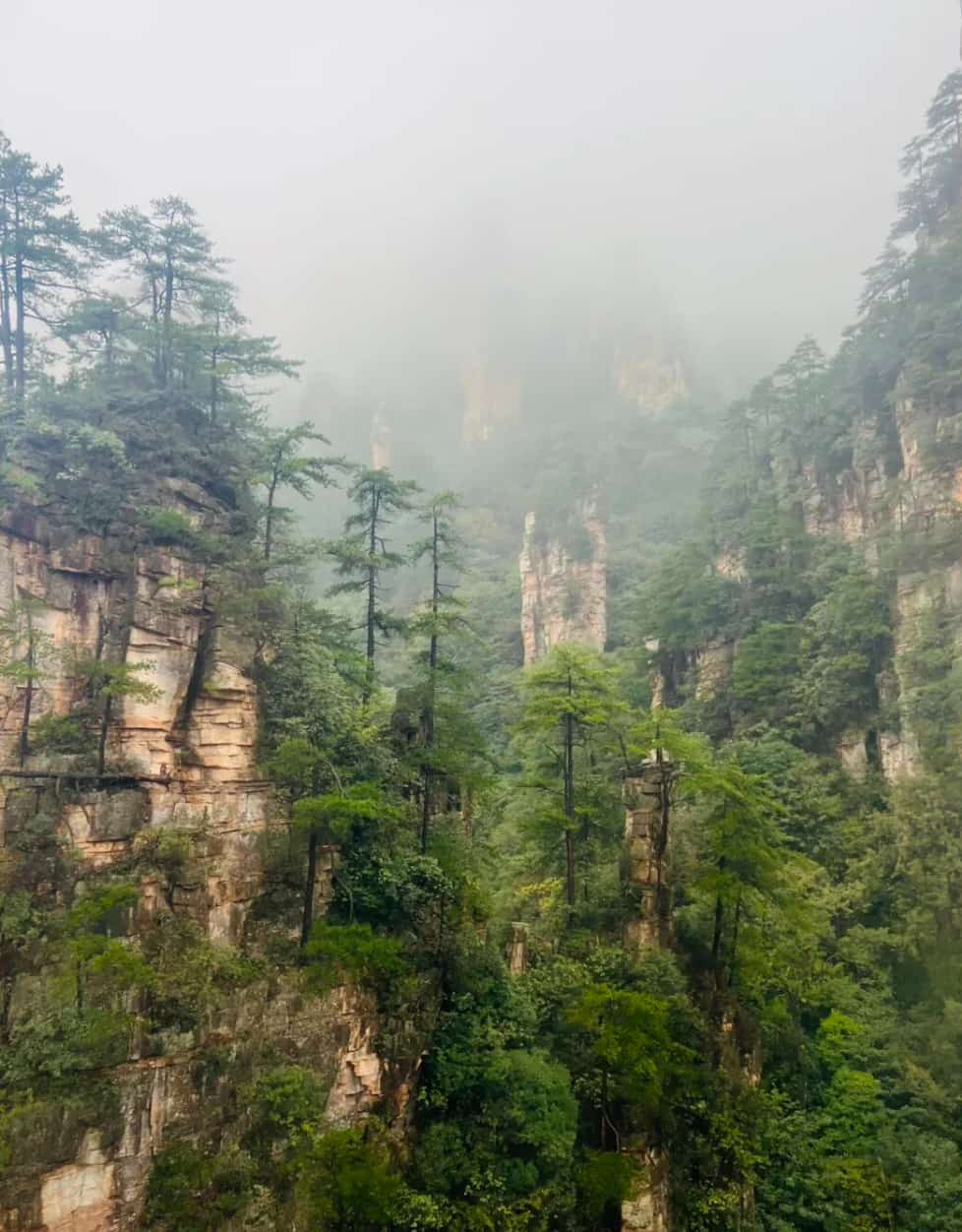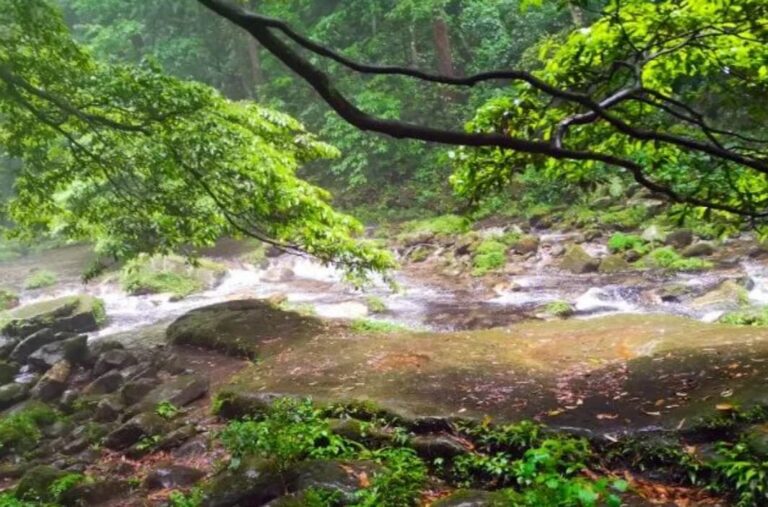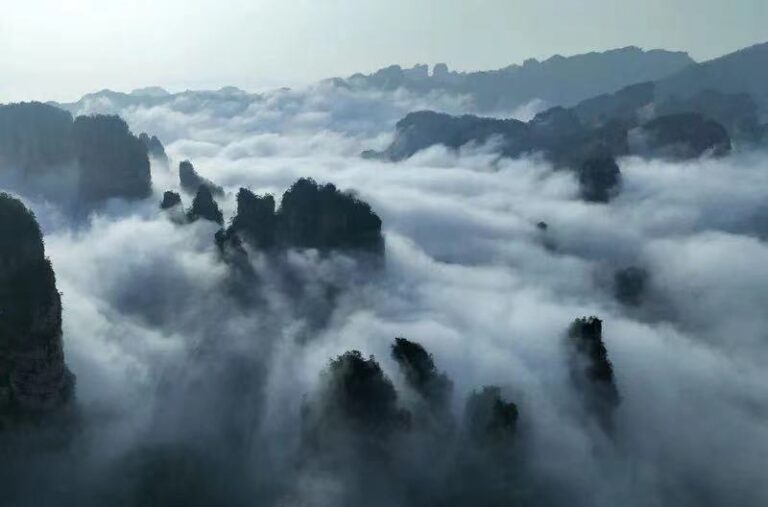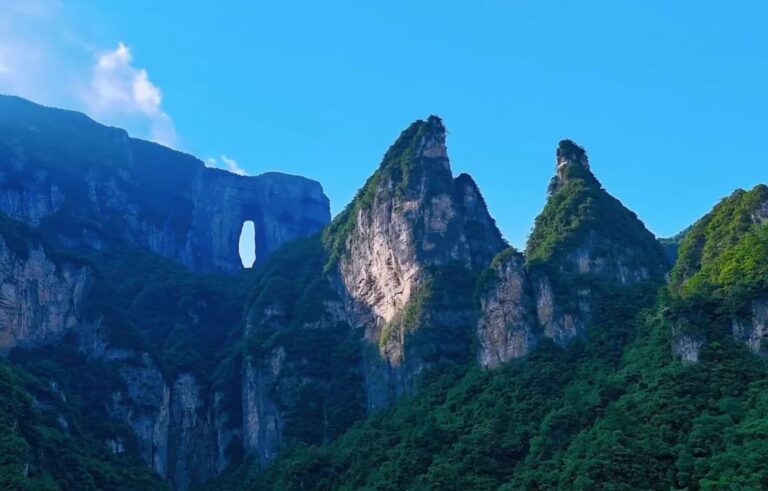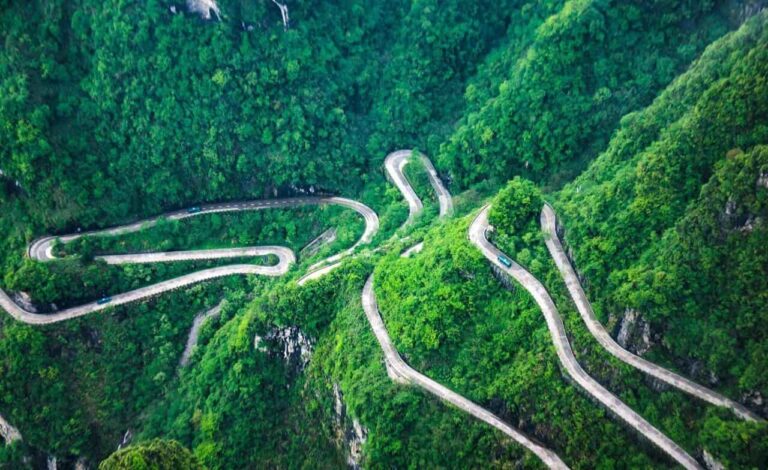Zhangjiajie is a must-visit destination in this lifetime.
October 14th, Morning: Chaozong Street Chaozong Street was enveloped in a gentle mist of drizzle. The stone pavement gleamed, washed clean by the rain. Along the street lined my favorite kind of artsy little shops, each window seeming to tell a story. I walked to the “Snail Yard” café, pushed open the door, and the aroma of coffee mingled with the sound of rain, making the entire morning soft and pleasant. Here, I lost track of time.

I checked into the Wyndham Hotel. For dinner, I dined at “Master Hu’s Three-Pot Stew” across the street. Three-Pot Stew is a traditional dish from the Zhangjiajie region, steeped in a story tied to the Tujia people’s resistance against Japanese pirates.
Legend has it that in the 33rd year of the Jiajing reign (1555), Japanese pirates raided the southeastern coast. The imperial court mobilized Tusi troops from western Hunan and Hubei to fight them. As the Lunar New Year approached, Tan Yaozhi, chieftain of Maogang in Yongding Garrison, knew this campaign might be his last. He resolved to celebrate the holiday early with his family. With time too short for traditional New Year dishes, the cooks combined cured pork, tofu, and radish into a stewed pot dish—the “Combined Dish.”
After eating this dish, the soldiers marched to the front lines, swiftly defeating the pirates and reclaiming the lost territories. This unique cooking method gradually spread, evolving over time into what is now known as “Three-Pot Dish.”
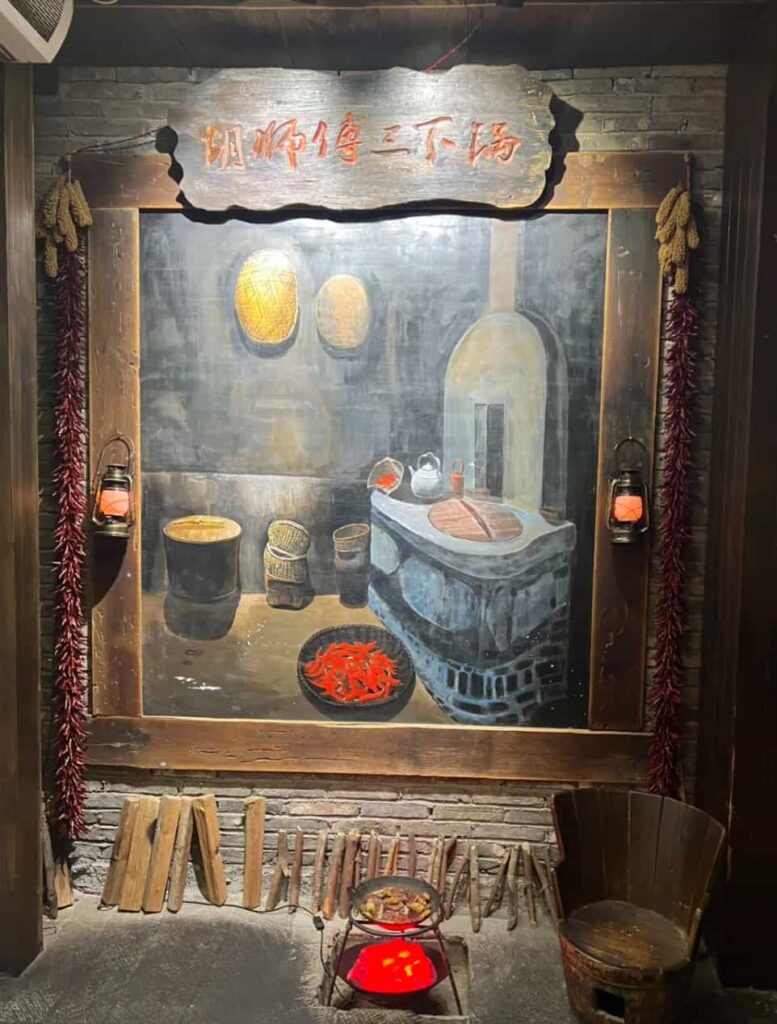
The terrace outside the hotel restaurant offers distant views of Tianmen Mountain. We departed for Tianmen Mountain at 8:30 AM, taking a taxi directly to the base. We chose Route B, which requires climbing 999 steps—suitable for those with good stamina who enjoy challenges. My companions were all amazing. I took the escalator straight to the summit. Tianmen Mountain in the rain, shrouded in mist, felt like a fairyland. Though the mountain paths were wet from the rain, it unexpectedly added a poetic touch. We hired a guide on the mountain and took the West Route. Following the guide, we listened to stories and admired the scenery as we traversed through the mist and drizzle. We were fortunate enough to not only see the majestic Tianmen Cave but also witness the spectacular sight of “Tianmen Cave spewing mist”—clouds surged out from the cave entrance, instantly enveloping the valley in a dreamlike haze. In that moment, all fatigue was washed away by this gift from nature.
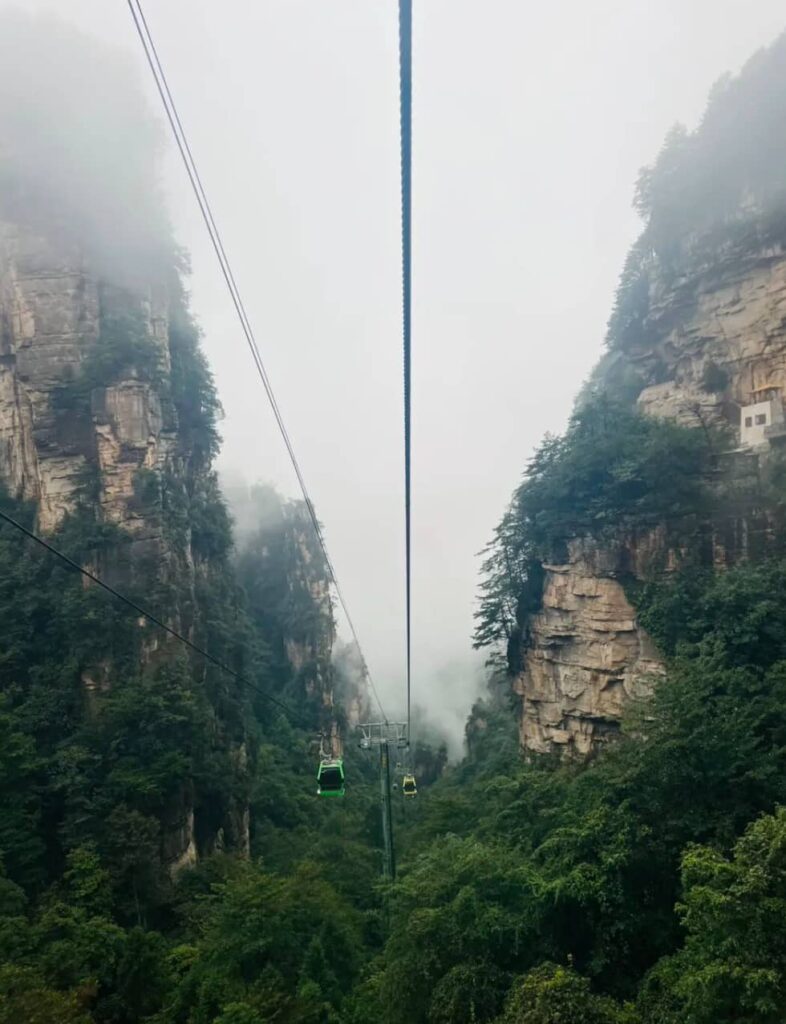
Tianmen Mountain Route B: Descend via the Tianmen Mountain Cableway, spanning 7,455 meters with a vertical elevation difference of 1,279 meters between stations. The one-way journey takes approximately 28 minutes. It is the world’s longest high-altitude scenic passenger zip line, offering views of billowing clouds below and towering peaks alongside.
Pickup at 2 PM from the homestay for a one-hour drive to “Puyi Homestay” in Wulingyuan Scenic Area. Stay here for two nights. Located at the West Gate of Zhangjiajie National Forest Park, Puyi Homestay features 10 villas in distinct styles. Nestled on a hillside amidst picturesque forests, it offers tranquil rural comfort. Directly opposite the guesthouse lies Yangjiajie. From the terrace, watch mist swirl around the mountains, their peaks appearing and disappearing like a fairyland. In the morning, open the window to breathe in the fresh air and listen to the rooster crow—all fatigue carried away by the mountain breeze.
October 16th, Cloudy and Rainy: A Zhangjiajie Trip That Was Fun Even Without a Plan
. Seeing heavy fog on the opposite mountain, we departed at 10 a.m. The concierge quickly drove us to the West Gate by electric cart in minutes. Choosing the West Gate offered quieter lodging and fewer crowds at attractions, eliminating queues. Tianzi Mountain, at 1,300 meters, is the highest peak, shrouded in thick fog and blanketed in white. At the Avatar filming location in Yuanjiajie, the scenery was similarly obscured by mist, leaving us only a faint sense of its wonder. Fortunately, the fog lifted briefly during our cable car ascent, revealing Zhangjiajie’s signature quartz sandstone pinnacles—towering peaks rising straight from the earth, an utterly spectacular sight. Descending to the Ten-Mile Gallery, we boarded a leisurely train to savor the Grand Canyon-like scenery at a relaxed pace.
Zhangjiajie’s unique landscape primarily consists of quartz sandstone peak forests, a formation exceptionally rare worldwide. Approximately 380 million years ago, this area was an ocean, where vast deposits of quartz sand formed thick sandstone strata. This terrain is characterized by towering, slender pillars, some soaring hundreds of meters high with flat summits and sheer, knife-edged cliffs. Deep gorges and crystal-clear streams often wind through these pinnacles.
The “Hallelujah Mountain” in the movie Avatar was inspired by Zhangjiajie’s unique landscape, propelling its beauty to global fame. As a result, foreign tourists are a common sight throughout the area.
October 17, Cloudy: A Day of Sightseeing in Zhangjiajie
We chose to revisit the highlight of yesterday—Yuanjiajie. As we ascended, a thin mist still lingered. Upon reaching the summit, a gentle breeze swept through, and the clouds and mist receded like a tide. Zhangjiajie’s distinctive quartz sandstone peak forest landscape suddenly unfolded before us—pillars of rock standing tall, gorges crisscrossing the terrain, a spectacle so magnificent it left us speechless. In that moment, we truly grasped the meaning of “taking it all in,” grateful for our good fortune to witness the perfect rendezvous of mountains and mist. We then proceeded to Huangshizhai, where the scenery felt more intimate than Yuanjiajie—the peak forests were close at hand, and the mountains appeared more graceful.
